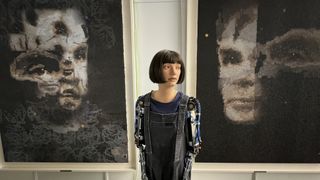The OpenAI Sora protest is just a taste of what’s to come in 2025 – here’s what needs to change
The recent outcry against OpenAI by its unpaid beta testers has once again shown that the goals of well-funded AI companies often conflict with the goals of the artists whose time is used in testing or whose work is used to train the AI in the first place.
During the most recent protest, the “red teamers” (beta testers with privileged access) that OpenAI invited to test Sora, the highly anticipated AI video-generating software, decided to leak the entire Sora to everyone while posting open letter on Hugging Face about their reasons.
The letter explains: “We gained access to Sora with the promise to be early testers, red teamers and creative partners. However, we believe we are instead being seduced into ‘art washing’ to tell the world that Sora is a useful tool for artists. Hundreds of artists provide unpaid labor through bug testing, feedback, and experimental work for the program for a $150 billion company.”
When I reached out to OpenAI for comment, a spokesperson told me: “Sora is still in the research phase and we are working to balance creativity and robust security measures for broader use. Hundreds of artists in our alpha have shaped the development of Sora and are helping to prioritize new features and security. Participation is voluntary, with no obligation to provide feedback or use the tool. We are pleased to offer these artists free access and will continue to support them through grants, events and other programs. We believe AI can be a powerful creative tool and strive to make Sora both useful and safe.”
OpenAI does indeed support some artists through grants, including at Tribeca, Charles LindsayAnd the Strada Gallery.
Portrait of the artist
But while the artists involved in the Sora test protest weren’t against using AI technology as a tool for art, there are plenty of other digital and traditional artists who are, or at least think they’re getting a bum rap . According to the Art and AI 2024 In a survey by Hiscox, the specialist global insurer, 77% of art collectors and 78% of art lovers believe artists should be fairly compensated for using their work to train AI platforms.
To demonstrate the ethical dilemmas surrounding AI-generated art, Hiscox unveiled the first ‘self-portrait of an AI artist’ in collaboration with forty established artists, whose work is often ‘borrowed’ without permission to train AI platforms.
Each artist contributed their portrait, and those images were merged into one face using a coding program called Facer. The image was then transformed into a stylized self-portrait painting to symbolize how an AI artwork is essentially a composite of human endeavor and creativity.
Big business

AI art can be big business. A portrait of English mathematician Alan Turing by robot artist Ai-Da was recently sold at auction in New York and fetched $1.08 million. While robot artist Ai-Da is a fairly unique case, it highlights how AI can generate art for money without compensating real artists.
But while many AI platforms don’t compensate the artists whose work they use to train their models, things are slowly changing. Meet Tessone of the first ethical AI image generators and the first of its kind to pay artists royalties when their styles are used. Artists can use Tess to create and license their own AI model based on their own art, so they get paid fairly for their work and the user can generate images without fear of copyright infringement.
While we still have a long way to go before artists are properly compensated for their work by AI companies, and protests against OpenAI are already breaking out, it feels like the landscape is slowly starting to change in the artist’s favor, and By 2025, there could be more and more protests against the AI industry.
Let’s hope there are enough real artists left to take advantage of this once the AI industry realizes the importance of human artists.
